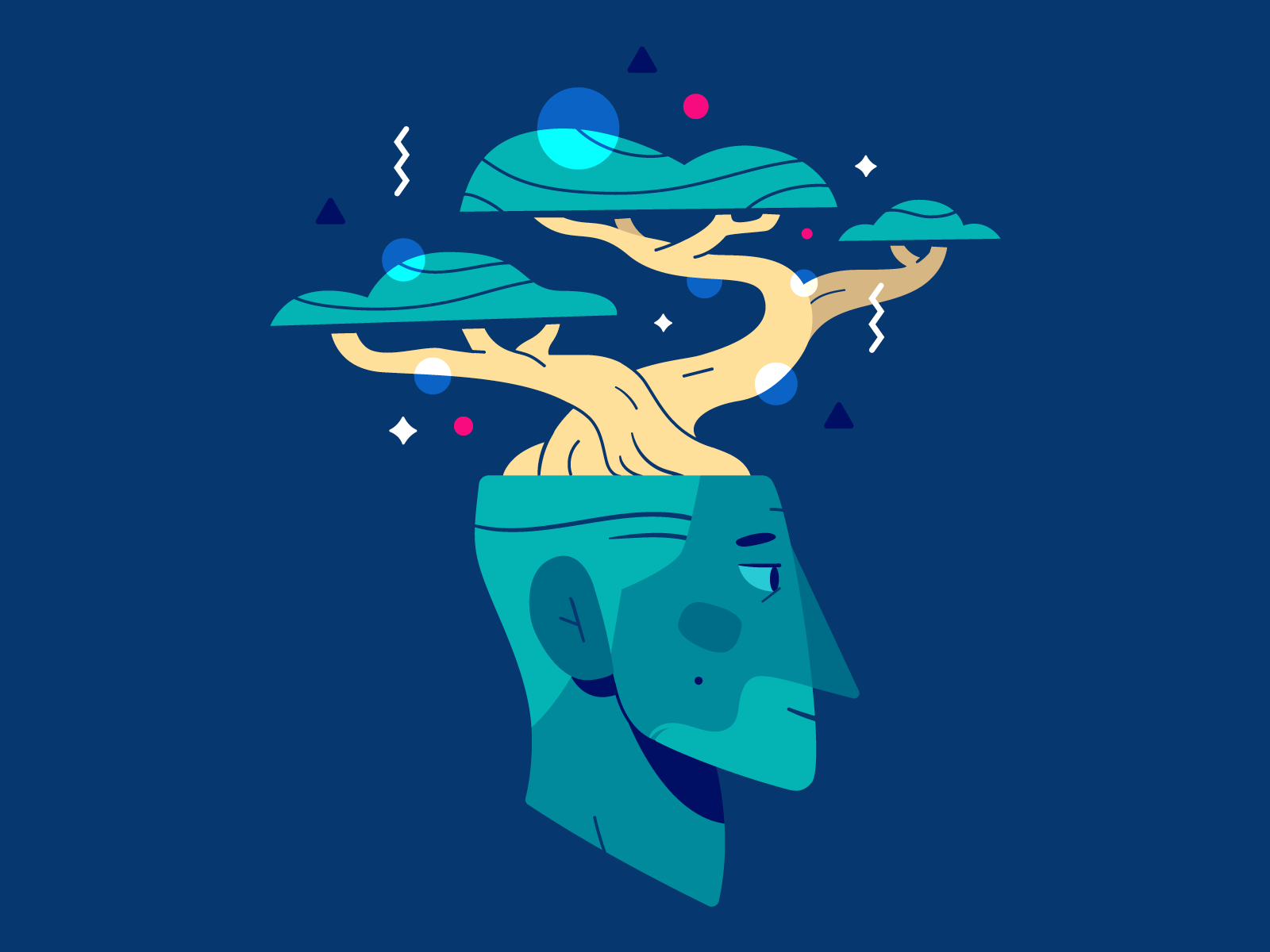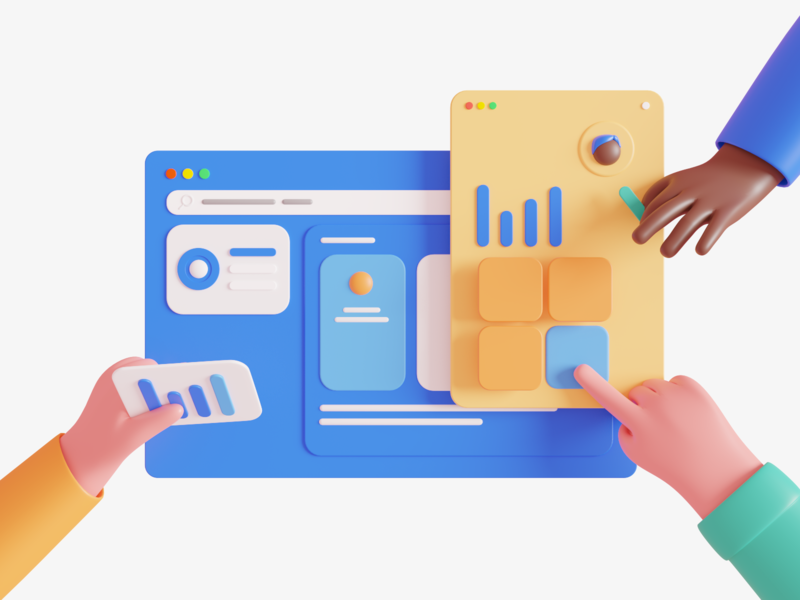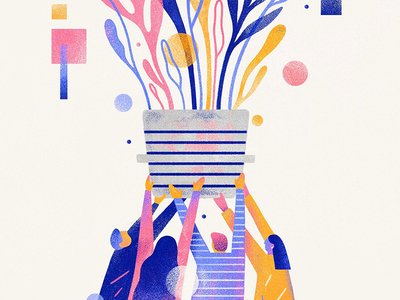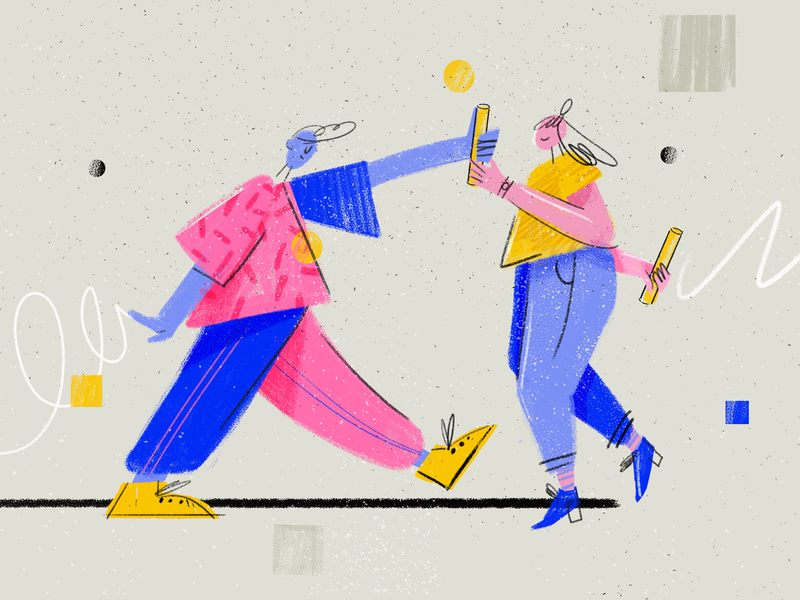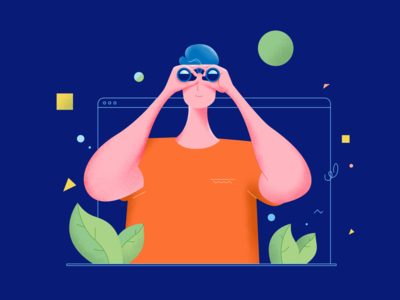Meet Geunbae Lee, a Product Designer at Facebook who joins us to share what growth as a designer means to him through five actionable steps.
Based on my experience, the growth process of a designer essentially comes down to five key steps: understand, execute, collaborate, lead, and envision. Before diving deeper into each of these areas, keep in mind is that growth isn’t a linear process—it’s always in continuation.
With that being said, there are probably plenty of other areas of growth that you will pursue and experience throughout your product design career. Here are just a few important ones:
1. Understand
Upon joining a new team, understanding the product (and how it works) is obviously one of the most important things to do. It’s also important that you start gaining additional context around the product that eventually will set you up for success on your first project.
There are probably ample amounts of resources internally and externally about the product within your team. Therefore, you can accumulate the breadth of knowledge through actively researching on your own and by asking experienced team members for extra help. Make sure you know who to reach out to for the questions you might have.
In parallel with all these efforts you make, try to understand the high-level goals and themes for your projects. Think about how the project you’ve been tasked with ladders up to the overall goal. This will help you to think bigger rather than myopically focusing on the immediate task at hand. Who knows, it might even help you generate and develop more awesome ideas.
Here, I wrote about what I did in my first several months working at Facebook, and how I made the extra effort to try to build empathy with the people using our product.
2. Execute
As you understand more about the product and start to accelerate at consuming necessary information, you’ll start to feel more confident about the direction of your design solutions and the process of how you get to them. This boost in confidence shouldn’t be underestimated because it’s an extremely important characteristic for a designer to have. It helps you to push your ideas further when needed and also, sets ground for you to absorb and reconcile new perspectives.
In addition to being confident about the things mentioned above, it’s also important to feel confident about utilizing design tools as well as the various design components and UI patterns that are used at your company. Undoubtedly, you’ll become much more efficient at exploring various ideas and sharing them with your team for feedback. Eventually, all of these will help you execute your designs better.
It’s important to keep in mind that execution doesn’t entirely mean that you need to quickly deliver the final design solutions to the engineers so that you can move on to the next project. Instead, execution encapsulates the efficient design process that you work through with your teammates so that everyone can move faster with confidence.
Regardless of what you’re presenting (problem statement, mock or designs) to the team, it should stir up meaningful and intentional conversations that ultimately lead to something actionable. Therefore, when it comes down to sharing just a couple of meaningful design explorations, your teammates already have the right amount of context which will result in exchanging more fruitful discussions.
3. Collaborate
Great collaboration within teams often results in more successful projects. As a designer, collaboration is super important given that you naturally need to communicate back and forth with a lot of people throughout your design process.
Becoming an awesome collaborator takes time and practice. Sometimes, you might be tempted to proceed in a certain direction without fully consulting and aligning with your team. Or, you might assume that everyone is on the same page without actively syncing up with them. These are just a few examples that you should really avoid when working on team projects. Instead, aim to communicate your recent progress as much as you can while also keeping tapped into other teammates’ priorities and their work. You should also try to give shout-outs and recognize people. Sometimes, over-communicating is more helpful than not.
If there are any frustrations or conflicts between you and your teammates, try to overcome them wisely without sitting on them. Thinking carefully about what can be improved and how with a positive mindset is encouraged. This can often be challenging, but it’s a great growth opportunity for anyone ongoing.
Try not to shy away from giving constructive feedback. This can lead to opportunities for you to engage in really great conversations with your teammates. If there’s something that can’t be solved by yourself, ask your manager or people around you for some additional help. After all, every all team members are in this together and it’s fair to assume that the intentions are good.
4. Lead
As you get more comfortable sharing your ideas and opinions with the team, your leadership skills start to grow. For instance, the projects you led and owned might set the context for upcoming work, and teammates will also continue to seek your input. There are a lot of different circumstances that could set you up to become a leader so continue practicing and honing in on those skills.
Remember, designers shouldn’t just be good at designing product experiences by cranking out UI solutions or thinking about interactions. In addition to having technical skills, in-person skills such as collaboration and leadership are also just as vital. Writing is also a great one to enhance communication with others. Being able to actively voice your thoughts and opinions builds a leadership mentality that contributes to people believing in you.
Last but not least, following through on how you exhibit that leadership is also key to guiding the team in the best direction. Leadership looks different for every designer. So it’s helpful to know what kind of leader you are and want to eventually become.
5. Envision
As you continue to make progress on current projects, it’s important to take a step back and set aside time to think about the bigger picture of how your work contributes to the product goal—both short term and long term. With enough experience and context, it gets easier to understand these goals and contribute to the future vision of the product as well.
For a designer, this is a really fun area of growth. By nature, designers are usually in the best position to collaborate with other stakeholders on product vision. As a designer, you know the end-to-end experiences of the product and are on the front lines of empathizing with users, which means you probably have a plate full of ideas ready to bring to the table.
However, product vision is not something that one person owns or simply shows off during a meeting. Instead, it’s formed by the whole team through many brainstorming sessions and collaboration processes. It’s essentially a process of building up a good story around the purpose of your past, current, and future work.
Therefore, as a designer, you should always look for opportunities to pitch your ideas and work with specific teammates to form a good foundation and rationale around your suggestions. Sometimes, it’s necessary to seed some ideas within each conversation to see if teammates jive with them too. Having a clear and inspiring product vision that aligns with strategic objectives helps in motivating and inspiring people.
Takeaways
There are so many talented designers around the world and probably where you work as well. Being naturally inspired by others and learning from watching over their shoulders is a great way to feel like you’re continuously growing. The nature of our work as designers requires both technical and non-technical skills, so it’s inevitable to feel like there’s always room for improvement.
Try to soak in what others do better than you and take the time to reflect on how you can grow in these areas too. Then, prioritize building these skills. Open your ears to feedback that you receive and don’t forget to track your progress! Finally, remember to be open-minded, passionate, and patient with yourself.

![]() Hi, my name is Geunbae “GB” Lee. I’m currently working as a Product Designer at Facebook in Seattle. I actively write about my experiences on Medium and engage in a lot of mentorship activities. I’ve always been passionate about giving back to the community & seeking inspiration so feel free to connect with me on LinkedIn.
Hi, my name is Geunbae “GB” Lee. I’m currently working as a Product Designer at Facebook in Seattle. I actively write about my experiences on Medium and engage in a lot of mentorship activities. I’ve always been passionate about giving back to the community & seeking inspiration so feel free to connect with me on LinkedIn.
RELATED ARTICLES
- How to land a senior design role (and what that even means)
- 5 soft skills every Product Designer should master
- How to become a Product Designer in 2020
Find more Inspiration stories on our blog Courtside. Have a suggestion? Contact stories@dribbble.com.



